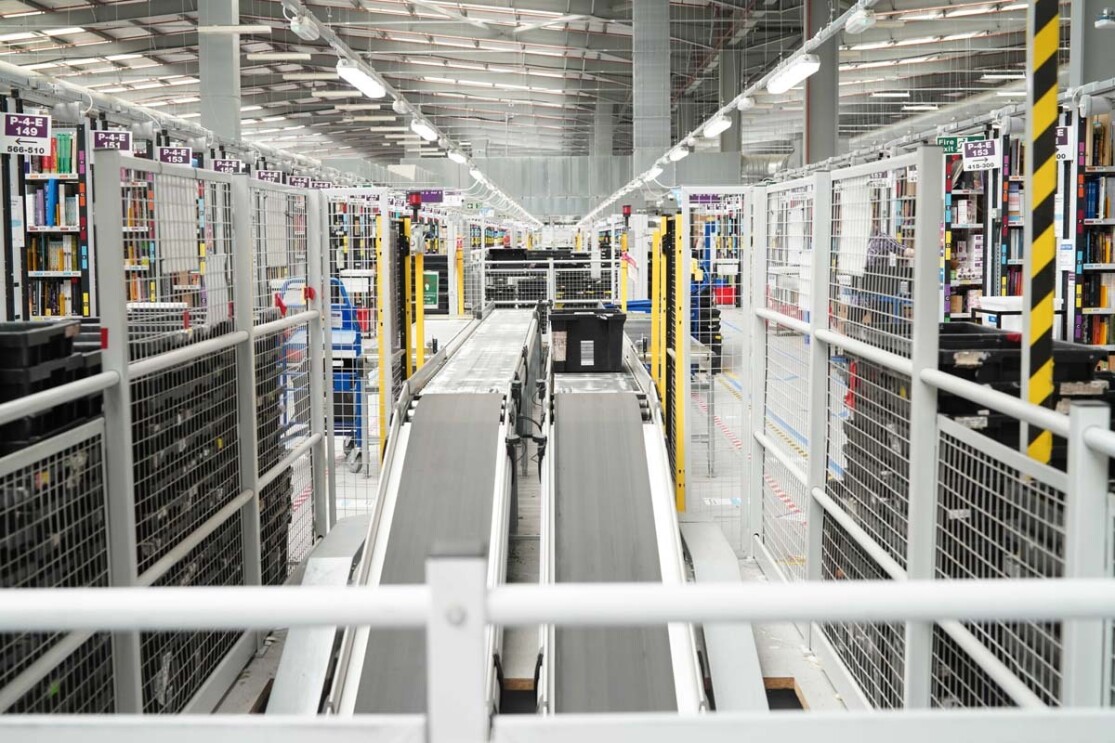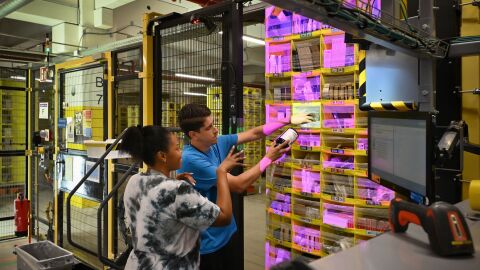A recent study, conducted by the Fraunhofer Institute for Material Flow and Logistics IML and commissioned by Amazon, has produced new insights into the use of personnel resource planning systems (RPS) across European warehouses.
Based in Dortmund, Germany, the Fraunhofer Institute for Material Flow and Logistics IML is a leading research institution specialising in holistic logistics. The institute focuses on applied research in logistics, helping companies select and implement the best systems for their needs.
The study, carried out between January and May 2024, surveyed managers at 166 locations across various European countries, including Germany, Switzerland, Austria, Italy, France, Poland, the UK and Spain. It covered a wide range of industries, with participants from manufacturing (33%), logistics services (37%), wholesale (21%), mail order/e-commerce (17%), and retail (13%). Company sizes varied from small enterprises with fewer than 51 employees to large corporations with more than 10,000 employees.

The study produced five key findings:
1. Most warehouses use IT systems for personnel resource planning: The survey found that 80% of locations use inputs from various IT systems to plan personnel resources, whether using a dedicated RPS, Excel, and/or other tools to cover day-to-day warehouse management and planning needs. Excel remains the predominant tool for resource planning in European warehouses, with 78% of surveyed locations using it, either exclusively (23%) or alongside other tools.
Currently, 21% of locations use a dedicated RPS, and managers in the locations that do report higher satisfaction levels in resource planning, citing these systems’ contribution to increased transparency and efficiency.
2. Common driving factors for RPS implementation: The need for an RPS is primarily driven by increasing efficiency requirements, order fluctuations, and decreasing availability of skilled labour. Locations that have implemented an RPS experience significant benefits, including improved cost efficiency, workload distribution, time efficiency, and planning accuracy.
3. Employees’ needs are central to RPS deployment: Employee-centered criteria play an important part when introducing RPS. Next to efficient capacity utilisation, RPS consider factors such as employees’ training level, individual capabilities (e.g., the need to accommodate any physical or medical restrictions), and availability. As a result of the employee-centered approach across Europe, the systems lead to employee benefits even more often than companies had expected before the implementation. Among warehouses that implemented a dedicated RPS, 74% said they expected improvements, and after the implementation, 86% reported improvements, specifically better workload distribution (fewer busy “peaks”), as well as an improved ability to implement job rotations and in turn, create a more ergonomic work environment for employees (through reduced repetitive motion).

4. Employees value RPS implementation: In 51% of locations that introduced a dedicated RPS, employee feedback was positive. There was no employee feedback in 40% of locations, and negative feedback came up in only 9% of those surveyed. In addition, there had been objections from employees, works councils or other forms of employee representation in only 6% of RPS implementations. Additionally, 43% of locations that have implemented a dedicated RPS included shopfloor employees in the early stages of the process.
5. Future plans for RPS adoption: Among locations not currently using an RPS, 25% plan to implement one within the next four years – that would bring the total percentage of warehouses using a dedicated RPS to more than 40% by 2028. This trend is especially pronounced among logistics service providers and manufacturing sites.
“Our aim with this study was to understand the current use of resource planning systems in warehouses and spread knowledge about possible tools and methods,” said Alina Kretschmer, Research Associate at the Fraunhofer IML. “We found that the majority of locations have already moved to IT-based tools, and that locations with resource planning systems in place have a higher level of satisfaction. These systems help create transparency, decrease the need for managers to make ad-hoc decisions, and employee feedback following implementation is positive.”
Responding to the study, Stefano Perego, VP International Operations & Global Ops Services at Amazon, said: “Amazon’s fulfilment relies on our great teams and on technology that help us to plan how to best serve our customers. Resource planning systems offer many practical benefits for companies, but the study also highlights how they benefit employees by facilitating that companies plan around their level of training, individual capabilities, and availability. These systems also help to improve workplace safety, for example by preventing unnecessary busy periods and facilitating us to rotate employees between jobs, which reduces repetitive motion. I’m proud that Amazon is a leader in workplace technology and expect that, as efficiency demands and challenges intensify, more companies will implement dedicated personnel resource planning tools.”










